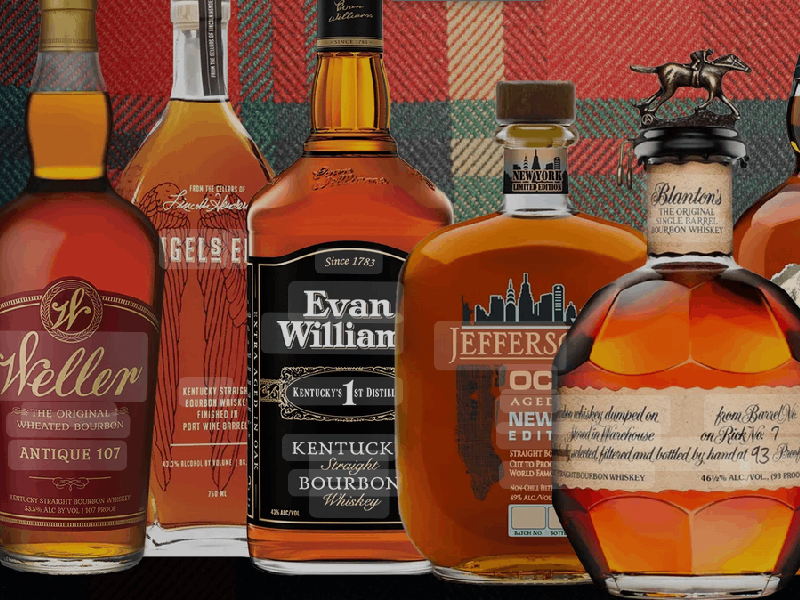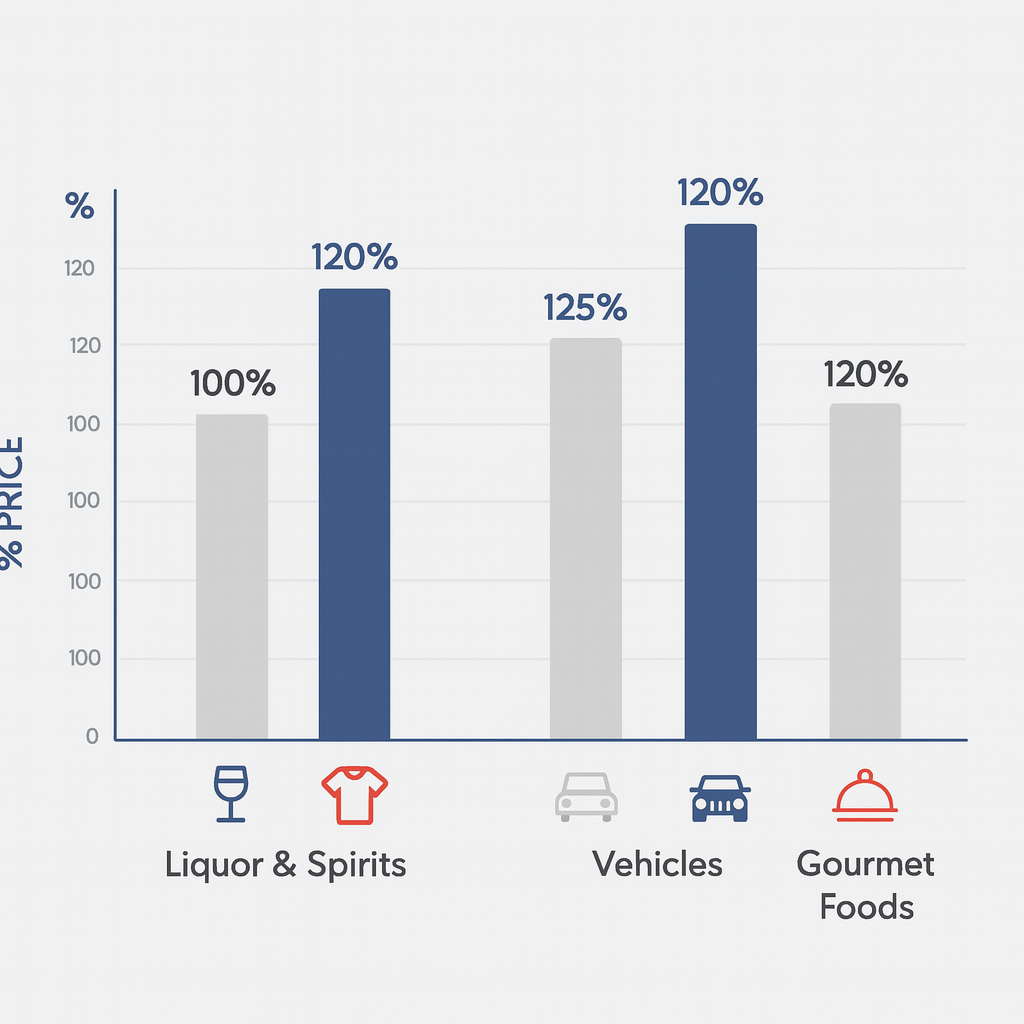
When a premium bottle of whiskey, a designer leather jacket, or a high-end European motorcycle comes to Canada today, it often carries more than the sleek branding and craftsmanship in its price tag. It may also carry the weight of escalating tariff burdens born from tensions in U.S.–Canada trade policy, retaliatory duties, and shifting import rules that are squeezing margins, restructuring supply chains, and reshaping buyer behavior.
Recent trade developments have intensified pressure across multiple categories. The United States has introduced a raft of tariffs affecting Canadian exports; Canada has countered with reciprocal duties on imports from the U.S., including goods in the luxury goods sphere. One result: American spirits exports to Canada plunged precipitously—in the second quarter of 2025, U.S. liquor exports to Canada fell by about 85 percent. Domestic distributors and importers cite uncertainty, stock pullbacks, and reluctance to invest in U.S. brands as leading causes.
More broadly, economic analyses suggest that the new U.S. tariffs—particularly those rolled out in 2025—are contributing to a noticeable rise in consumer prices for clothing and textiles in the U.S. market (up to 17 percent in certain scenarios), partly as exporters pass costs downstream. Though that is a U.S. figure, the ripple effects can feed into Canadian import prices when goods or inputs cross borders. Meanwhile, food prices are also facing upward pressure—estimates show increases of 1.6 percent from early 2025 tariffs alone, climbing to 2.8 percent when all tariff measures are accounted for.
For Canadian firms that rely on U.S. luxury goods as stock or source materials, the margin squeeze is real. Many are reassessing whether it still makes sense to import U.S. liquor, fashion brands, or components of high-end automobiles. Others are redirecting sourcing toward Europe, Asia, or deepening domestic production where feasible. A few confectionery and chocolate producers are shifting U.S. production back to European factories to avoid being hit by Canadian retaliatory tariffs, especially when tariffs threaten to outweigh logistical savings.

Luxury Liquor: Broken Flows and Broken Shelves
Arguably the starkest casualty of the tariff exchange is in the spirits business. With U.S. liquor exports to Canada collapsing by 85 percent in Q2 2025, brands and distributors are scrambling to cope. Some provincial liquor boards have effectively delisted certain U.S. brands, whether by direct order or in deference to “buy-Canadian” sentiment sweeping shelves. This move, insiders say, has hurt U.S. distillers who had previously viewed Canada as a stable export market.
For consumers, the impact is double: fewer choices, and when U.S. liquor remains in circulation, steeper prices. Importers cite rising compliance costs, duty uncertainty, and reduced volume leverage as key drivers of markups. Some boutique cocktail bars and liquor stores report shrinking U.S. label availability or increasing reliance on aged bottles already in domestic warehouses.
At the same time, Canadian and foreign (non-U.S.) brands are positioning to fill the gap—brands from Scotland, Ireland, Japan, and craft distilleries are courting shelf space and consumer attention. Yet, in many cases, the shift does little to soften consumers’ sticker shock: tariffs, markup chains, and provincial taxes still push “luxury liquor” into rarefied pricing territory.

Fashion and Accessory Imports: Tariff Shock Meets Brand Premiums
Luxury fashion has long operated on tight margins and perception. A designer handbag, couture garment, or premium shoe border price justifies brand prestige; hidden tariff hikes can tip that balance. The U.S. tariffs and retaliatory tariffs on certain U.S. luxury goods have caused friction in that ecosystem.
Many fashion and accessory importers now face higher landed costs, and much of that cost is being passed to consumers. In some boutique contexts, the difference between bringing in goods from Italy or France versus from the U.S. is now significant. Retailers are managing inventory more conservatively, negotiating with brands for tariff adjustments or absorbing some costs. Others are rethinking U.S. distribution routes, choosing to ship direct from a European hub instead of routing via U.S. territory.
Consumers are noticing. Some high-end shoppers report seeing price deltas that feel disproportionate to currency fluctuations. Others are pushing more heavily toward “made-in-Canada” or European-sourced luxury lines—especially when tariffs make U.S.-origin items markedly more expensive.
For local luxury retailers, the uncertainty is a drag on stocking decisions and brand commitments. A smaller batch line that looked profitable at pre-tariff margins may no longer be viable when the U.S. origin goods suddenly attract extra duty layers, compliance costs, and delays.
Food & Specialty Gourmet Imports: Taste Under Tariff Pressure
Fine foods and gourmet imports—think specialty cheeses, boutique chocolates, rare olive oils or foie gras—are not immune. Many of these depend on cross-border supply chains or U.S.-based artisanal producers. Tariff exposure raises the cost of bringing them into Canada, which is now squeezing profit margins or forcing price increases for food lovers.
Producers and importers say that while luxury food goods are a niche, consumer expectations are unforgiving: a 10-dollar premium on a rare cheese may deter buyers entirely. As a result, some specialty grocers are reducing the roster of U.S. gourmet items or switching to European alternatives even when logistical costs are higher—if the tariff burden is lower.
That said, the impact here is more muted compared to liquor or fashion, simply because volumes are smaller and discretionary consumers are more price elastic. But cumulative pressure is real, especially as grocery inflation and rising living costs already tighten budgets.

Automobiles, Motorcycles and Automotive Imports: When Tariffs Meet Torque
Perhaps the most scrutinized domain of luxury goods under tariff tension is the automotive and motorcycle sector. High-end cars and bikes often cross international borders with complex supply chains, parts content, and origin rules. When tariffs bite, they bite hard.
In 2025, Canada instituted 25 percent retaliatory tariffs on U.S.-made vehicles that do not comply with the rules of origin under the U.S.–Mexico–Canada Agreement (USMCA, or CUSMA in Canada). The tariff also applies to the non-Canadian and non-Mexican content of U.S.-manufactured vehicles even if USMCA-compliant. This move is meant to mirror U.S. tariffs on Canadian autos and protect domestic or third-country alternatives.
For luxury car importers and premium motorcycle dealers, this increases the cost of bringing in U.S. models or U.S-built variants. The margin buffer for dealerships narrows, forcing either higher consumer prices or strategic adjustments in portfolio mix. Some dealerships are rebalancing their U.S. vs. European lines, leaning more on import models that are tariff-favored or built outside the U.S.
Motorcycle distributors face a similar squeeze. Brands that rely on U.S. build plants or U.S. assembly may now be at a disadvantage versus European or Asian competitors whose supply chains bypass U.S. tariffs. Dealers report greater variance in landed costs, longer shipping lead times, and more aggressive negotiations with manufacturers over price buffers.
Consumers seeking exotic cars or premium motorcycles must now weigh not just sticker price and financing but also the hidden tariff layer—and the longer risk of price volatility if trade policies change.

Canadian Retaliation, Shifting Tariff Postures, and the USMCA Safety Net
It is important to recognize that Canada has not stood idle. Starting March 2025, Canada imposed 25 percent tariffs on U.S. goods worth $29.8 billion in response to U.S. levies on steel, aluminum, and autos. Those Canadian retaliatory tariffs cover a range of goods, including tools, computers, display monitors, sporting equipment, and certain manufactured items. This retaliatory framework is the backdrop against which luxury goods flows are being contested.
Yet, as of September 1, 2025, Canada began removing retaliatory tariffs on U.S. goods covered under the USMCA (CUSMA), in effect aligning Canada’s policy with U.S. exemptions for goods under the trade agreement. This move is designed to reduce friction on goods that already qualify under USMCA rules and prevent collateral damage to sectors reliant on U.S. inputs. However, Canada is retaining tariffs on steel, aluminum, and autos—key structural categories where the beef remains unresolved.
The shifting tariff posture introduces a layer of unpredictability: a luxury item that is USMCA-compliant may escape tariffs, but items that are partially manufactured or assembled in the U.S. with components originating from elsewhere might still be penalized. The compliance burden is rising: importers and luxury goods distributors must scrutinize certificates of origin, bill of materials, and supply chain provenance with far greater rigor.
Winners, Losers, and Consumer Behavior
Luxury goods markets tend to be more resilient to price shocks because customers are less price-sensitive. But when the tariff wedge is steep, even high-end consumers start to hesitate. Some of the firms and actors gaining advantage or weathering the storm include:
- European and non-U.S. luxury brands whose goods avoid U.S.-origin tariffs. Their relative cost competitiveness improves.
- Domestic Canadian luxury producers or artisans, who increasingly become preferred alternatives in a climate of tariff-inflated U.S. imports.
- Dealers and importers that anticipated the tariff shift and hedged inventory or supply chains accordingly.
- Consumers willing to pay the tariff premium for exclusivity or brand loyalty—but likely fewer in number than before.
Conversely, the most exposed parties are:
- U.S.-origin luxury goods (spirits, fashion, automotive components) whose margins get squeezed or get removed from shelves.
- Small importers and boutique retailers who lack scale to absorb or buffer tariff shocks.
- Luxury goods dependent on U.S. supply chain integration, who must retool sourcing or logistics.
- Consumers with middle-tier luxury budgets who may retreat to non-luxury alternatives when premium options become too pricey.
Collectively, consumer behavior is shifting. Many Canadian shoppers are becoming more intentional—checking origin labels, postponing purchases, comparing U.S. versus European options, or migrating toward domestic or third-country products. Some are delaying upgrades or buying down. The “luxury purchase” that once felt indulgent now often feels speculative.
The Road Ahead: Volatility, Trade Deals, and Strategic Rebalancing
The effects of U.S. tariffs on luxury goods in Canada reveal a compelling intersection of international policy and everyday indulgence. Where once a high-end car, whiskey, or couture bag might have gotten through mostly on reputation and branding, it now must pass through layers of tariff scrutiny, supply chain re-engineering, and consumer psychology recalibration.
Luxury sectors are adapting—some shifts are subtle, others dramatic—but the net effect is undeniable: luxury goods are becoming costlier, more complex to trade, and more strategically managed than ever before. Whether the shocks are temporary or transformative will depend largely on diplomatic resolve, trade frameworks, and the ability of businesses to pivot fast.
For Canadian consumers, the promise of luxury is no longer simply about design or rarity. It is increasingly about timing, sourcing pedigree, origin compliance, and tariff hedges. And in that evolving landscape, the price one pays is not simply in dollars—it is in patience, risk, and foresight.
